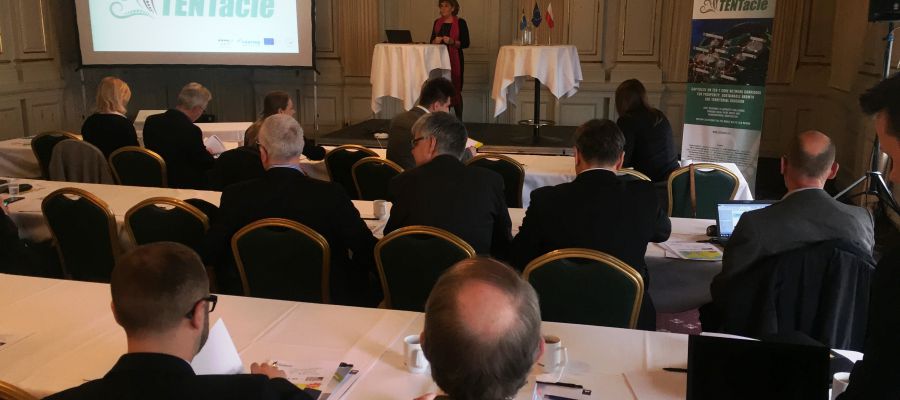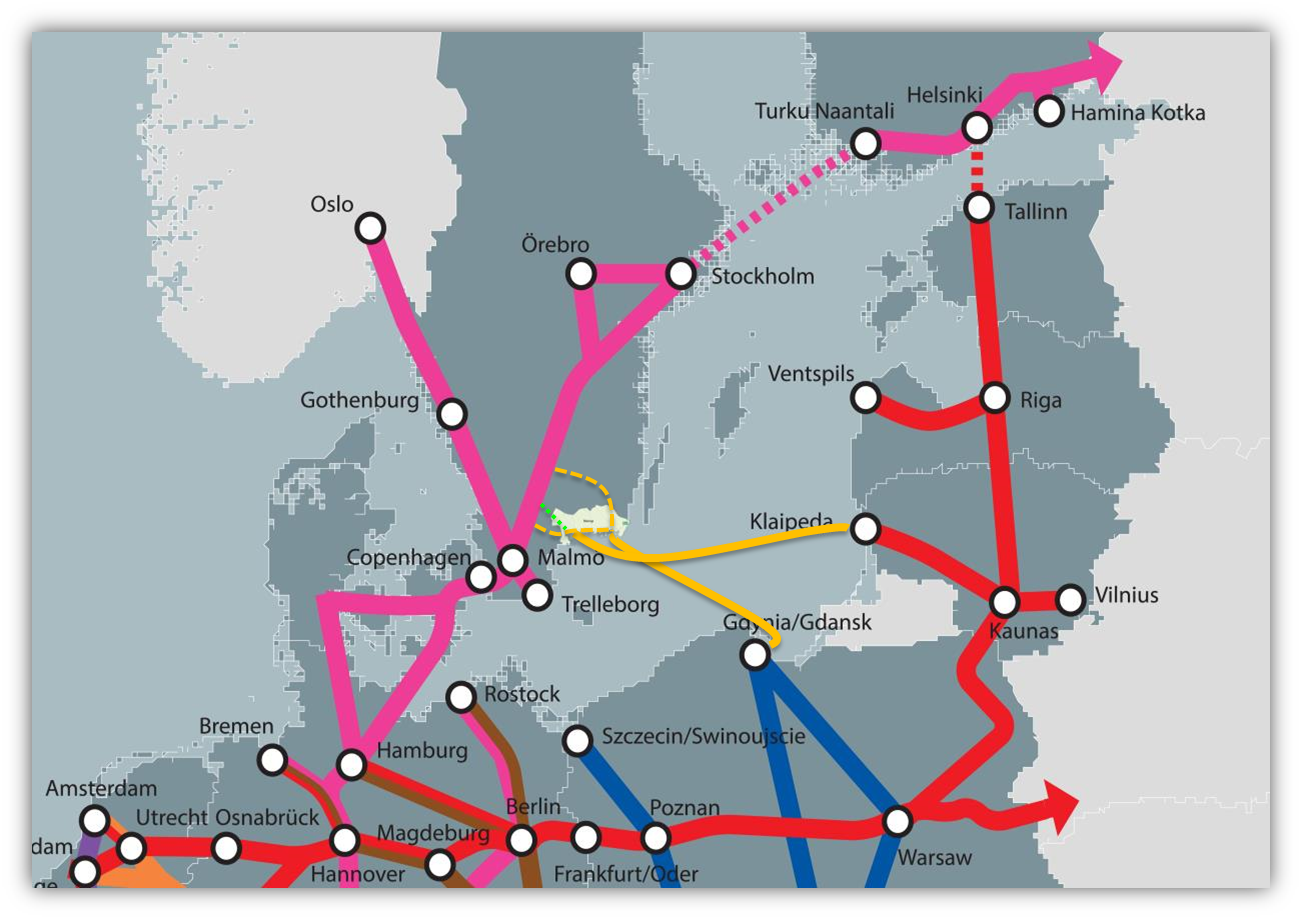
Published 3 Apr, 2017
Ideas for enhancing the bridging role of Blekinge in between the TEN-T core network corridors
Karlskrona, 30 March 2017
The county of Blekinge, located in the south-eastern part of Sweden, is not pictured on the map of main European transport axes and its road and rail accessibility indices are among the country lowest. Even though the freight and passenger volumes through the Blekinge ports of Karlshamn and Karlskrona on transit between Scandinavia and Central/Eastern Europe steadily increase, infrastructure investments in Blekinge are not prioritised by the European and national decision-makers.
About 30 politicians, infrastructure planners and transport experts from Sweden and Poland, including representatives of the Swedish Transport Administration and Polish Ministry of Infrastructure and Construction, were invited by the TENTacle project to Karlskrona on 30 March to discuss how to improve the competitive position of Blekinge in-between the three TEN-T core network corridors: Scandinavian-Mediterranean, Baltic-Adriatic and North Sea-Baltic.

The presentations on the Swedish and the Polish transport infrastructure planning frameworks set a perspective for an exchange of ideas on more effective planning methods and demand-tailored last mile road and rail investments in Blekinge. The participants were unanimous in opinion that the better connected Blekinge would be to the urban and transport hubs on the three TEN-T core network corridors, the higher the chances come to boost knowledge-intensive branches utilising competence of local graduates and in-migrating high-skilled labour force - drawing on the central geographical position of Blekinge in the Baltic Sea region. However, the scarce resources for large investment projects must be used in a smart way to strike a balance between the regional mobility needs (commuting for education and work) and serving the international transports.
"Blekinge has a strategically important location for transport to Poland and the Baltic states, and thereby to Eastern Europe and Asia. The government and the Swedish Transport Administration must realise that Blekinge and its ports should be linked in the best way to the European core network corridors in Sweden and the neighbouring countries", said Christina Mattisson, Region Blekinge, Chair of the Regional Board. "It is extremely important for our region and the whole country’s competitiveness that the infrastructure is adapted to the increased volume of freight on Blekinge railways and roads."
Particularly inspiring is the work on investments giving access to and supporting the core network corridors in Poland as shown by the colleagues from the city of Gdynia and the Pomorskie region who represent one of the parallel pilot cases in the TENTacle project. The demonstrated methods to interface between the public and market stakeholders, to map the transport investments affecting the local development in the so called urban node on the core network corridors, or to design decision-support systems in local traffic management are worth considering for adoption in the further stakeholder dialogue in Blekinge.
A broad support was also given to the idea of extending the Baltic-Adriatic Corridor northwards, so that it connects the ports of Gdynia and Karlskrona, and continues towards the port of Gothenburg. A closer cooperation between the Baltic-Link Association (http://www.baltic-link.se/) and the Association of the Polish Regions of the Baltic-Adriatic Transport Corridor (http://regionybac.pl/) is expected to help deliver evidence and working approaches to accomplish that.
The thematic seminar resulted in several recommendations to be taken aboard in the upcoming Blekinge case activities of the TENTacle project. They range from the lobbying and communication aspects (e.g. to mobilise the local stakeholders and get support from the Polish counterparts for the sake of including the key investments for Blekinge in the Swedish national transport plan), perception issues (to change the mental map and shift a focus in transport planning from national transport networks to a cross-border transport system), to the commercial dimension of a transport corridor (to justify the investments through flow and volume data, and the needs of freight owners and forwarders).
The Blekinge case in the TENTacle project will deliver a policy document in a form of addendum to the Regional Transport Plan 2018-2029.
More information:
Wiktor Szydarowski
Project manager
Region Blekinge
wiktor.szydarowski@regionblekinge.se